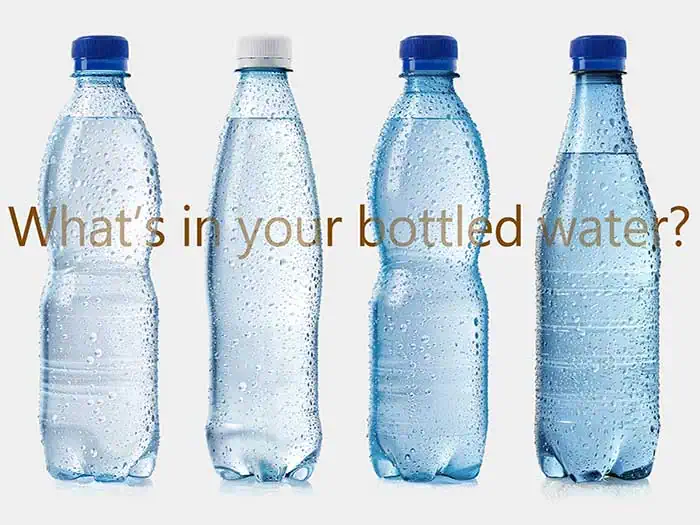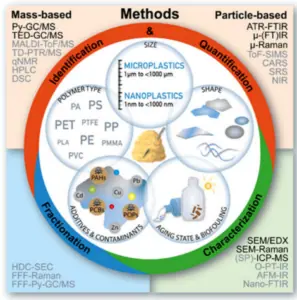


In recent years, the growing concern over the environmental and health impacts of nanoplastics has highlighted their pervasive presence and potential harmful effects on living organisms. The early 1970s saw the first reports of plastics polluting the marine environment. However, scientists only began to focus significantly on nanoplastics in the early 2000s, making it a significant area of study in scientific literature since then.
Both microplastics and nanoplastics, small plastic particles differing mainly in size, pose environmental and health risks. Sources of microplastics, defined as pieces smaller than five millimeters, include the breakdown of larger plastics, microbeads in cosmetics, and synthetic fibers from textiles. Nanoplastics, measuring less than 100 nanometers, challenge detection and removal efforts due to their minuscule size. Their potential for deep penetration and accumulation in organisms, including crossing cellular barriers, raises concerns about their impact on toxicology. These smaller plastics may result from further microplastic breakdown or specific engineering for specific uses.
Synthetic or semi-synthetic materials, plastics consist of long polymer chains and pose risks due to their environmental persistence and potential for bioaccumulation. The large surface area and hydrophobic nature of nanoplastics enable them to carry organic pollutants, including persistent organic pollutants (POPs) such as PCBs, dioxins, DDT, PAHs, BPA, and phthalates, many of which disrupt endocrine functions. The process of pollutants associated with plastics varies, influencing environmental degradation processes.
Qian et al. found that bottled water from various brands contains approximately 2.4 ± 1.3 × 10^5 plastic particles per liter on average.[1] They individually analyzed these particles to identify the chemical diversity among different polymer types. Among the identified polymers, Polyamide 66 (PA), Polypropylene (PP), Polyethylene Terephthalate (PET), Polyvinyl Chloride (PVC), and Polystyrene (PS) likely contribute significantly to micro-nano plastics exposure through bottled water. Although the specific chemical composition of these micro-nano plastics varies across brands, PA consistently emerged as a predominant component in quantity among the brands studied.
Furthermore, Qian et al. found comparing the exposure of micro-nano plastics from bottled water challenging when using blank samples of reverse osmosis (RO) water from the Milli-Q system, as the Milli-Q water showed the same level of plastic contamination as bottled water. Since plastics are a major component in many parts of the entire water purification system and polyamides serve as the most common material for RO membranes, the presence of nanoplastics in the water disqualifies it from being used as the lab blank for nanoplastic studies.
Overall, RO is an effective approach in control of plastics, however, the age of the membrane and its integrity and the operation conditions might affect the effectiveness of the filtration process according to SCS research and experts.
The widespread detection of microplastics in items consumed daily by humans, including food, beverages, and packaging materials—with bottled water being a significant source—highlights the pervasive nature of microplastic ingestion. Field documentation has shown that microplastics affect a broad spectrum of aquatic organisms across the marine food web, including turtles, seabirds, fish, crustaceans, and worms.[2]
The toxic effects of nanoplastics on organisms depend on their surface properties and size. Positively charged nanoplastics, for instance, disrupt cellular functions more significantly than their negatively charged counterparts, and their small size facilitates easier penetration of cellular membranes, leading to accumulation in tissues and cells.[3]

Cai et al. examined 33 studies on advanced methods for pretreating, separating, identifying, and measuring nanoplastics. While most studies effectively identified nanoplastics added to environmental samples as standards, they struggled to isolate and measure nanoplastics in actual environmental samples. A significant issue is that these studies often quantified nanoplastics without chemically verifying the types of polymers involved, casting doubt on the accuracy of their findings.
The current techniques for detecting and quantifying nanoplastics in the environment are limited, with Fourier Transform Infrared Spectroscopy (FTIR) being the predominant method for identifying polymers.[4] Emerging technologies, such as Hyperspectral Stimulated Raman Scattering (SRS) microscopy, promise to enhance the detection of nanoplastics by providing detailed, label-free chemical imaging through unique Raman signatures.[5] Nonetheless, the effective deployment of these technologies faces challenges, including the need for precise sample preparation and the ability to distinguish plastics from other environmental materials. Achieving accuracy in identifying plastics amongst other substances and distinguishing among various plastic polymers is crucial.
Ongoing advancements in technology and methodology are essential for detecting, quantifying, and monitoring nanoplastics across different settings. Such efforts are vital for gaining a clearer understanding of their distribution and concentration levels.
Understanding the entire lifecycle of nanoplastic pollution—from production to degradation—and the collective measures required to address this widespread issue is imperative. The minute size and substantial surface area of nanoplastics, relative to their volume, contribute to their resistance to natural degradation processes. The inherent chemical stability of polymers, which is beneficial for numerous applications, means that plastics do not readily decompose or chemically interact with other substances in the environment.
The hydrophobic nature of many nanoplastics limits their engagement with waterborne microbes and enzymes that potentially could help break them down. Polymers with high chemical and thermal stability, such as Polyethylene Terephthalate (PET), Polypropylene (PP), and Polystyrene (PS), are particularly resistant to environmental degradation processes. This resistance makes nanoplastics especially challenging to degrade, leading to their accumulation and persistence in the environment over time.
One of the most direct ways to combat nanoplastic pollution is to reduce the overall production and use of plastics, especially single-use plastics that are more likely to degrade into micro and nanoplastics. However, the likelihood of substantially reducing plastic production and use depends on various factors, including technological advancements, policy decisions, consumer behavior, and global cooperation.
Developing and using biodegradable or sustainable plastics instead of traditional ones is key. These alternatives are becoming more available and affordable, but more innovation and investment are needed to use them widely.
Better recycling technology that can efficiently turn used plastics into new products could reduce the need for new plastic. However, improving these technologies and making them available everywhere is a challenge.
The issue of nanoplastic pollution is global, with particles found even in remote areas, necessitating international cooperation and solutions.
Ongoing research into nanoplastics, including their interactions with biological systems and their potential roles in diseases such as Parkinson’s,[6] underscores the critical need for developing effective detection, quantification, and mitigation strategies to address the environmental risks they pose.
The extent to which nanoplastics are present in the environment remains uncertain because of the inefficiencies and inaccuracies in current detection methods. These methods’ outlined strengths and weaknesses underscore the unreliability of existing data.
The widespread concern over microplastics and nanoplastics has spurred scientific, policy, and public efforts to better understand their sources, movement, and impacts and find ways to reduce their environmental footprint. Nevertheless, challenges persist in detecting and quantifying nanoplastics, understanding their degradation and contaminant release mechanisms, and tracking their movement through food webs.
Resources:
[1] Qian N, Gao X, Lang X, Deng H, Bratu TM, Chen Q, et al. Rapid single-particle chemical imaging of nanoplastics by SRS microscopy. Proc Natl Acad Sci. 2024;121(3):e2300582121
[2] Wright, S. L., Thompson, R. C., & Galloway, T. S. (2013). The physical impacts of microplastics on marine organisms: A review. Environmental Pollution, 178, 483–492.
[3] Karapanagioti, H. K., & Klontza, I. (2008). Testing phenanthrene distribution properties of virgin plastic pellets and plastic eroded pellets found on Lesvos Island beaches (Greece). Marine Environmental Research, 65, 283–290.
[4] Vanavermaete, D., Lusher, A., Strand, J. et al. Plastics in biota: technological readiness level of current methodologies. Micropl.&Nanopl. 4, 6 (2024). https://doi.org/10.1186/s43591-024-00083-9
[5] Qian N, Gao X, Lang X, Deng H, Bratu TM, Chen Q, et al. Rapid single-particle chemical imaging of nanoplastics by SRS microscopy. Proc Natl Acad Sci. 2024;121(3):e2300582121.
[6] Anionic nanoplastic contaminants promote Parkinson’s disease-associated α-synuclein aggregation. Liu Z, Sokratian A, Duda AM, Xu E, Stanhope C, Fu A, Strader S, Li H, Yuan Y, Bobay BG, Sipe J, Bai K, Lundgaard I, Liu N, Hernandez B, Bowes Rickman C, Miller SE, West AB. Sci Adv. 2023 Nov 15;9(46):eadi8716. doi: 10.1126/sciadv.adi8716. Epub 2023 Nov 17. PMID: 37976362.
EPA is releasing the interim guidance for public comment. The guidance provides information on technologies that may be feasible and appropriate for the destruction or disposal of PFAS and PFAS-containing materials. It also identifies needed and ongoing research and development activities related to destruction and disposal technologies, which may inform future guidance.
The interim guidance addresses PFAS and PFAS-containing materials including:
The agency is also providing guidance on testing and monitoring air, effluent, and soil for releases near potential destruction or disposal sites. EPA’s interim guidance captures the significant information gaps associated with PFAS testing and monitoring and identifies specific research needs.
The interim guidance is intended to assemble and consolidate information in a single document that generally describes thermal treatment, landfill, and underground injection technologies that may be effective in the destruction or disposal of PFAS and PFAS-containing materials.
As further research and development occur on this issue, EPA will incorporate this increased knowledge into future versions of this guidance to help decision-makers choose the most appropriate PFAS disposal options for their particular circumstances. EPA will review and revise the interim guidance, as appropriate, or at least once every 3 years.
See the EPA website: EPA Interim Guidance on Destruction and Disposal of PFAS.
Instructions: All submissions received must include Docket ID No EPA-HQ-OLEM-2020-0527 for this rulemaking. Comments received may be posted without change to the Federal eRulemaking Portal. You may send comments by any of the following methods:
According to Waste Dive, the document is the first such federal guidance on the destruction or disposal of PFAS or PFAS-containing materials. It describes the available science used in three major techniques: deep well injection, landfilling and thermal treatment. Acknowledging uncertainty about potential environmental effects, the EPA proposed the interim storage of PFAS-containing waste until further research can “reduce the uncertainties associated with other options.”
Industry groups such as the National Waste & Recycling Association (NWRA) and the Solid Waste Association of North America (SWANA) said they are analyzing the document and discussing with their members, such as SCS Engineers what the interim guidance means for daily landfill operations. The trade groups will submit comments on the document by the Feb. 22 deadline.